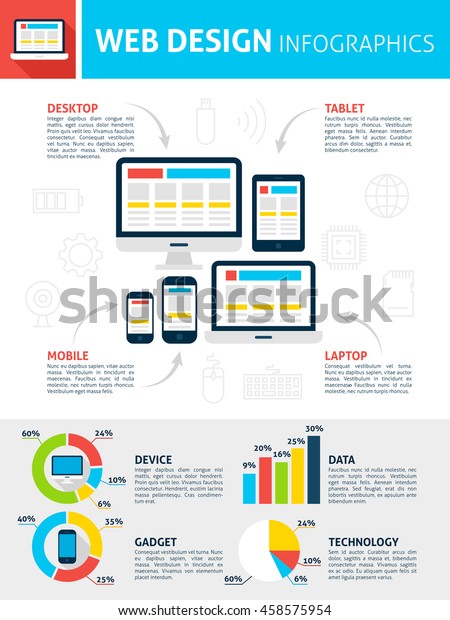Intrigued In Discovering Just How Web Site Design Has Advanced? Take A Journey Via The Makeover
Intrigued In Discovering Just How Web Site Design Has Advanced? Take A Journey Via The Makeover
Blog Article
Personnel Author-Kinney Clarke
In the past, websites were basic and concentrated on information. Navigation was direct, and style was for desktop computers. Currently, customer experience is essential. Information guides styles for simple navigating. Receptive formats fit different tools. Today, dark setting minimizes stress, and minimalist menus enhance navigating. Interactive attributes involve users, and strong visuals stand apart. AI integration increases involvement. See just how layout has actually advanced to improve your on the internet journey.
Early Days of Website Design
In the early days of website design, simplicity preponderated. Internet sites were fundamental, with limited shades, typefaces, and formats. The focus was on providing information instead of fancy visuals. Customers accessed the net with slow dial-up connections, so speed and capability were key.
Navigation menus were straightforward, commonly located at the top or side of the page. Web sites were designed for home computer, as mobile browsing wasn't yet prevalent. Material was king, and developers prioritized easy readability over intricate layout aspects.
HTML was the main coding language utilized, and developers needed to function within its restraints. https://www.google.com/maps/place/Moon+and+Owl+Marketing/@32.9757271,-106.5344695,1840583m/data=!3m1!1e3!4m6!3m5!1s0x864ddeaa4179705b:0x488d41d2cc6b9750!8m2!3d32.9757271!4d-97.5696258!16s%2Fg%2F11b6mpccrg?entry=ttu&g_ep=EgoyMDI1MDIxMS4wIKXMDSoJLDEwMjExNDUzSAFQAw%3D%3D and interactive attributes were marginal contrasted to today's requirements. https://www.searchenginejournal.com/local-seo-tips-serps-map-pack/397587/ were fixed, with little vibrant content or individualized user experiences.
Increase of User-Focused Style
With the advancement of site design, a change in the direction of user-focused style concepts has come to be progressively popular. Today, producing sites that focus on individual experience is important for involving site visitors and achieving business goals. User-focused style involves comprehending the requirements, choices, and actions of your target audience to customize the site's layout, web content, and features appropriately.
Developers now perform detailed study, such as user studies and functionality screening, to gather insights and comments straight from individuals. This data-driven strategy aids in developing intuitive navigating, clear calls-to-action, and aesthetically attractive user interfaces that reverberate with site visitors. By positioning the user at the facility of the style procedure, sites can deliver a more tailored and delightful experience.
Receptive design has also become a key facet of user-focused style, ensuring that sites are optimized for different gadgets and screen dimensions. This adaptability improves ease of access and use, dealing with the diverse ways customers communicate with sites today. Basically, the rise of user-focused style signifies a change in the direction of creating electronic experiences that prioritize the demands and expectations of completion individual.
Modern Trends in Web Design
Explore the current patterns shaping website design today. One noticeable trend is dark mode layout, supplying a sleek and modern appearance while reducing eye strain in low-light environments. Another key trend is minimal navigating, simplifying menus and improving customer experience by concentrating on essential elements. Integrating micro-interactions, such as computer animated buttons or scrolling impacts, can create a much more engaging and interactive internet site. Receptive layout stays crucial, making sure seamless customer experiences throughout various tools. Furthermore, using vibrant typography and unbalanced designs can add visual rate of interest and draw attention to specific web content.
Incorporating AI modern technology, like chatbots for consumer assistance or individualized recommendations, enhances individual interaction and streamlines procedures. Accessibility has additionally come to be a significant trend, with designers focusing on comprehensive layout practices to cater to diverse customer needs. Embracing sustainability by enhancing site efficiency for rate and efficiency is an additional arising pattern in web design. Teaming up with user comments and data analytics to iterate and boost style constantly is necessary for staying appropriate in the ever-evolving digital landscape. By embracing these contemporary trends, you can produce a visually appealing, user-friendly website that reverberates with your audience.
Conclusion
As you reflect on the evolution of site style from the very early days to currently, you can see just how user-focused layout has become the driving force behind contemporary fads.
Embrace the trip of modification and adjustment in web design, always keeping the individual experience at the forefront.
Remain present with the latest fads and modern technologies, and never ever stop advancing your approach to produce aesthetically magnificent and user-friendly sites.
Progress, adjust, and develop - the future of web design remains in your hands.
